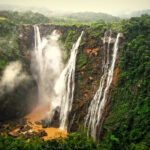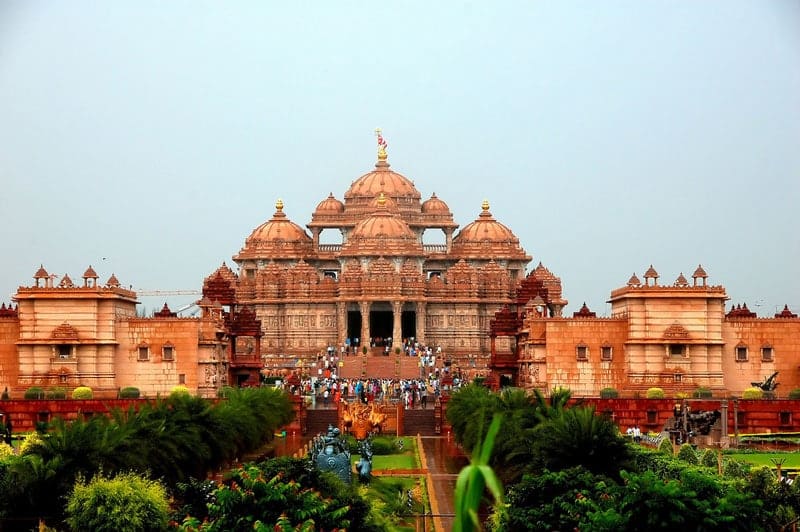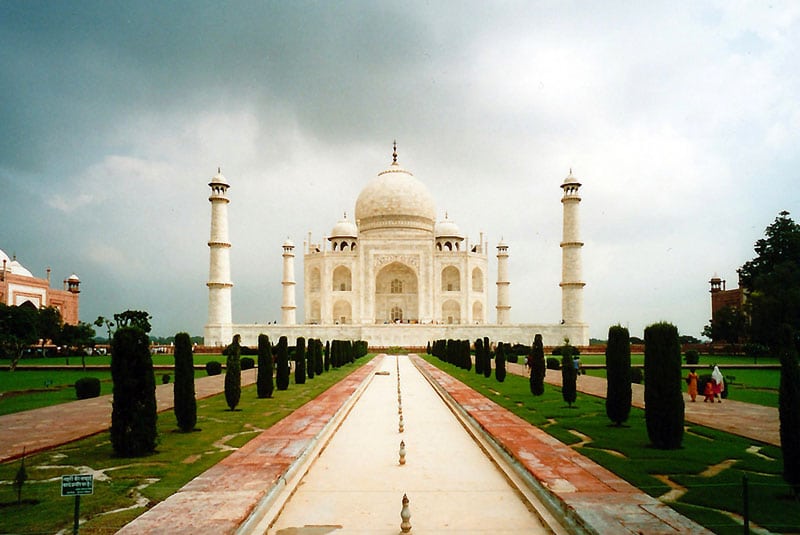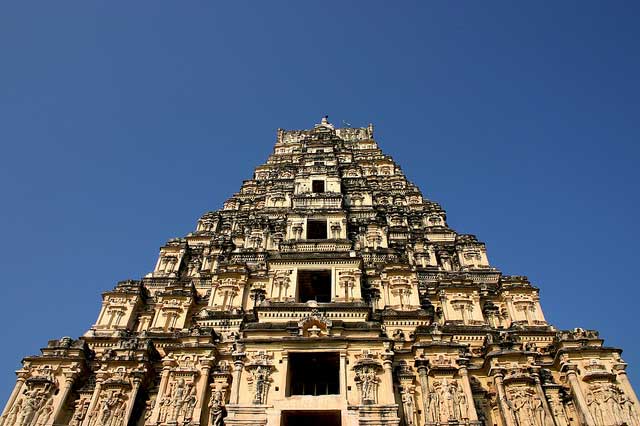Cheraman Juma Masjid, located in Thrissur, Kerala, is not only a significant religious site but also one of the oldest mosques in India. The mosque’s historical, architectural, and cultural value makes it a prominent destination for pilgrims, historians, and tourists. Known for its connection to the introduction of Islam in India, this ancient mosque is a testament to the rich heritage and religious diversity of the Indian subcontinent.
Introduction to Cheraman Juma Masjid
Cheraman Juma Masjid, situated in the town of Kodungallur in Thrissur district, is believed to have been built in 629 AD. The mosque holds a special place in history because of its association with Islam’s arrival in India, which is said to have been initiated by Prophet Muhammad’s (PBUH) instructions. The mosque’s unique heritage, coupled with its serene and tranquil atmosphere, makes it a must-visit site for those interested in the history of Islam in India.
Historical Significance of Cheraman Juma Masjid
The Cheraman Juma Masjid holds historical significance due to its association with Cheraman Perumal, the King of Malabar. According to legend, Cheraman Perumal traveled to Mecca in the 7th century, where he met the Prophet Muhammad (PBUH). The king then embraced Islam and was among the earliest converts to the religion in India. He also built the Cheraman Juma Masjid to commemorate this event, making it the first mosque to be built in India, thus playing a crucial role in the spread of Islam across the country.
Architecture of Cheraman Juma Masjid
The mosque’s architecture reflects a unique blend of Arabian and Kerala styles. Its design incorporates traditional elements of Islamic architecture, with large domes, arched doorways, and minarets, while also embracing local Kerala construction techniques. The mosque is built without the use of nails, which is a distinctive feature of traditional Kerala architecture. The wooden structure, ornate carvings, and intricately designed ceilings are testimonies to the craftsmanship of the era.
Key Features of the Mosque’s Architecture
- Wooden Construction: The use of wood in the construction of Cheraman Juma Masjid is a noteworthy feature, reflecting the traditional Kerala style.
- Grand Entrance: The mosque has a grand wooden door with intricate carvings that reflect the craftsmanship of the period.
- Domes and Minarets: The large dome in the center and the minarets add to the aesthetic appeal of the mosque, making it a beautiful and calming place of worship.
- Arabic Calligraphy: The mosque features Arabic calligraphy and intricate designs, often seen in Islamic architecture, which adds to the spiritual ambiance.
Role in the Spread of Islam in India
The Cheraman Juma Masjid holds an important place in the history of Islam in India. It is believed that Islam was first introduced in India through the efforts of Prophet Muhammad’s (PBUH) followers, and Cheraman Juma Masjid is considered the birthplace of the religion in the country. According to historical accounts, the mosque was established in the year 629 AD, which makes it one of the oldest mosques in India and the oldest mosque in Kerala. It symbolizes the long-standing connection between the region and the Muslim faith.
Over the centuries, the mosque has witnessed the cultural exchange between Arabs and the people of Kerala. The arrival of Islam through Cheraman Perumal helped foster a peaceful coexistence of various religious communities in the region, making Kerala a vibrant melting pot of cultures.
Visiting Cheraman Juma Masjid
Visitors to the Cheraman Juma Masjid are often struck by the mosque’s peaceful atmosphere and its beautiful surroundings. The mosque remains an active place of worship and is open to Muslims and non-Muslims alike. The serene setting, combined with the historical and cultural importance of the mosque, makes it a major attraction in Kerala.
Key Highlights of a Visit
- Historical Relics: The mosque houses several historical relics, including ancient Arabic inscriptions and manuscripts that offer insights into the early days of Islam in India.
- The Tomb of Cheraman Perumal: The tomb of Cheraman Perumal, the king who built the mosque, is also located near the mosque. Visitors can pay homage to the king who played a pivotal role in the establishment of Islam in Kerala.
- Calm and Tranquil Environment: The atmosphere around the mosque is peaceful, with the surrounding landscape offering a sense of spiritual calm.
Facilities for Visitors
- Prayer Facilities: As an active mosque, Cheraman Juma Masjid provides prayer facilities for Muslims who visit. The mosque offers a clean and serene space for worship.
- Museum: The mosque has a small museum showcasing the history of Islam in Kerala, with artifacts, manuscripts, and inscriptions that illustrate the legacy of the mosque.
Best Time to Visit Cheraman Juma Masjid
The best time to visit Cheraman Juma Masjid is during the cooler months of October to March, as the weather is pleasant and conducive for exploration. Kerala’s tropical climate can be humid during the monsoon season, so visiting during the winter months ensures a comfortable experience.
How to Reach Cheraman Juma Masjid
Cheraman Juma Masjid is located in Kodungallur, Thrissur district, Kerala. The mosque is easily accessible from the main town and can be reached by various modes of transport:
- By Air: The nearest airport is Cochin International Airport, which is around 35 km from the mosque. From the airport, you can take a taxi or rent a vehicle to reach the mosque.
- By Train: The Kodungallur Railway Station is the closest railway station to Cheraman Juma Masjid. You can hire a taxi or use local transport to get to the mosque.
- By Road: Kodungallur is well-connected by road, and you can easily drive or take a bus from Thrissur, Cochin, or other nearby cities.
Conclusion: Why Visit Cheraman Juma Masjid
Cheraman Juma Masjid is not just a mosque; it is a symbol of the rich historical and cultural legacy of Islam in Kerala. The mosque’s architectural grandeur, combined with its historical significance, makes it a must-visit landmark for anyone interested in exploring the roots of Islamic heritage in India. Whether you are a history enthusiast, a cultural traveler, or a pilgrim, Cheraman Juma Masjid offers an unforgettable experience.
Frequently Asked Questions (FAQs) about Cheraman Juma Masjid
1. Where is Cheraman Juma Masjid located?
Cheraman Juma Masjid is located in Kodungallur, in the Thrissur district of Kerala, India. It is approximately 35 km from Cochin International Airport and 40 km from Thrissur town.
2. What makes Cheraman Juma Masjid historically significant?
Cheraman Juma Masjid is historically significant because it is one of the oldest mosques in India, established in 629 AD. It is believed to be the first mosque in India and marks the introduction of Islam in the subcontinent, following the conversion of Cheraman Perumal, the King of Malabar, to Islam.
3. Who built Cheraman Juma Masjid?
The mosque was built by Cheraman Perumal, the King of Malabar, who converted to Islam after meeting Prophet Muhammad (PBUH) in Mecca. The mosque was constructed to commemorate the king’s conversion and his efforts in spreading Islam in India.
4. Can non-Muslims visit Cheraman Juma Masjid?
Yes, non-Muslims are allowed to visit Cheraman Juma Masjid. While the mosque is primarily a place of worship for Muslims, it is open to all visitors interested in learning about its historical and cultural significance.
5. What is the architectural style of Cheraman Juma Masjid?
The architecture of Cheraman Juma Masjid combines traditional Kerala-style construction with Islamic architectural elements. The mosque features wooden structures, intricate carvings, large domes, and minarets, blending local craftsmanship with Islamic design.
6. What can I see at Cheraman Juma Masjid?
Visitors can explore the mosque’s beautiful architecture, historical relics, and Arabic inscriptions. The tomb of Cheraman Perumal, the king who built the mosque, is also located nearby, offering a place for homage. The mosque houses a small museum displaying items related to the history of Islam in Kerala.
7. Is there a dress code for visiting Cheraman Juma Masjid?
While there is no strict dress code, visitors are expected to dress modestly. For men and women, it is recommended to cover the shoulders and knees. As a place of worship, respectful attire is appreciated.
8. What is the best time to visit Cheraman Juma Masjid?
The best time to visit is between October and March, when the weather is cooler and more comfortable for sightseeing. Avoid visiting during the monsoon season (June to September), as the region experiences heavy rainfall.
9. How do I reach Cheraman Juma Masjid?
You can reach Cheraman Juma Masjid by:
- Air: The nearest airport is Cochin International Airport (35 km away).
- Train: The nearest railway station is Kodungallur Railway Station (10 km away).
- Road: The mosque is easily accessible by road from Thrissur, Cochin, and other nearby towns.
10. Is there parking available near Cheraman Juma Masjid?
Yes, there is ample parking space available near the mosque for visitors traveling by car. Parking is generally available in the vicinity of the mosque.
11. Can I take photographs at Cheraman Juma Masjid?
Yes, photography is allowed at Cheraman Juma Masjid, but it is important to respect the privacy of individuals and avoid taking photos in areas where it is prohibited. Always check for any signage or guidelines regarding photography.
12. Are there any facilities for visitors at Cheraman Juma Masjid?
Yes, the mosque provides basic visitor facilities, including prayer facilities for Muslims, rest areas, and a small museum showcasing historical artifacts related to the mosque and Islam in Kerala.
13. How long should I plan to spend at Cheraman Juma Masjid?
A visit to Cheraman Juma Masjid typically takes about 1 to 2 hours, depending on your interest in exploring the mosque’s architecture, history, and nearby attractions like the tomb of Cheraman Perumal.
14. Is there an entry fee to visit Cheraman Juma Masjid?
No, there is no entry fee to visit Cheraman Juma Masjid. The mosque is open to the public and entry is free, though donations are often appreciated to support the maintenance and upkeep of the mosque.
15. What is the cultural significance of Cheraman Juma Masjid?
Cheraman Juma Masjid represents the cultural and religious harmony in Kerala, where Hinduism, Islam, and other religions have coexisted peacefully for centuries. It marks a significant chapter in the spread of Islam in South India and is a reflection of the region’s rich multicultural heritage.




















